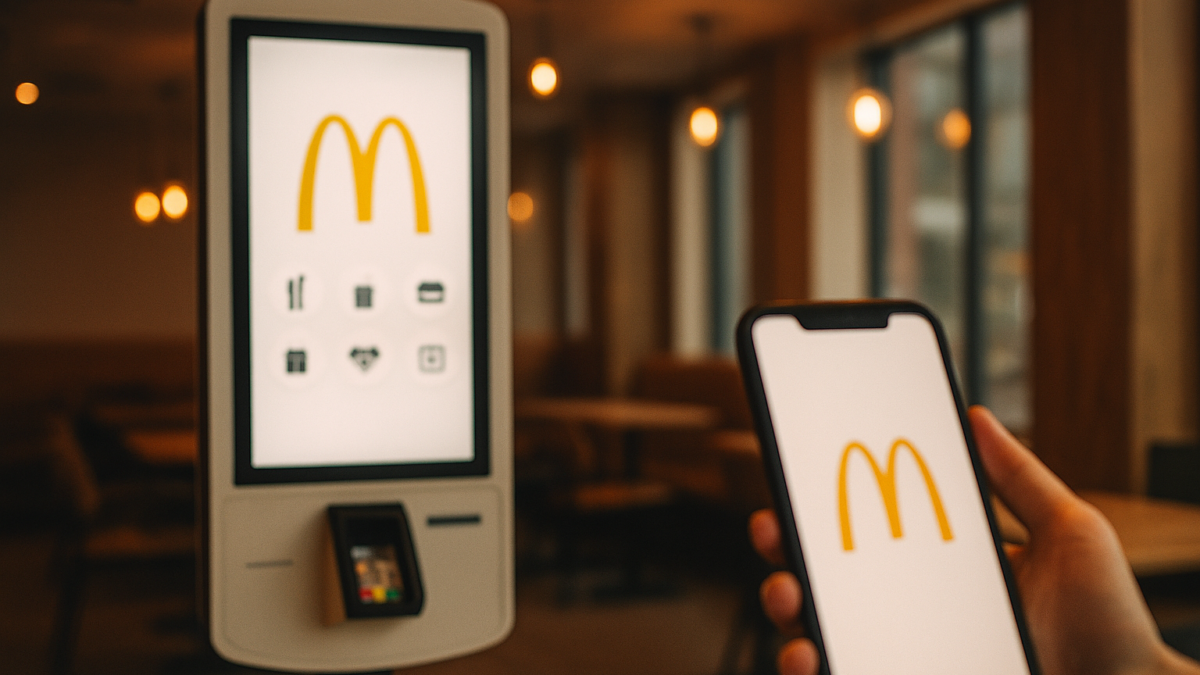McDonald’s Martech Strategy: How the Golden Arches Went Digital
Table of Contents
Introduction
Once known only for its burgers and fries, McDonald’s has rapidly transformed into one of the most digitally advanced QSR (quick-service restaurant) brands in the world. Behind the counter is a sophisticated Martech strategy driving real-time personalization, data analytics, and automation—making every customer interaction faster, smarter, and more memorable.
From AI-powered drive-thrus and mobile apps to loyalty platforms and dynamic menus, McDonald’s is no longer just a fast-food giant—it’s a data-driven experience machine.
In this blog, we unpack the key components of McDonald’s martech journey and explore how the Golden Arches went digital to future-proof customer engagement.
Why McDonald’s Needed Martech
The QSR industry faces intense competition, tight margins, and ever-evolving customer expectations. With Gen Z and Millennials demanding personalized, frictionless experiences, McDonald’s realized it had to move beyond mass marketing and start building relationships at scale.
Key challenges McDonald’s aimed to solve:
- Fragmented customer journeys (offline/online)
- Lack of unified customer data
- Low retention without loyalty tools
- Growing demand for delivery & self-service options
To overcome this, the brand doubled down on Martech investments, digital transformation, and strategic partnerships.
Mobile App: The Heart of Martech
McDonald’s mobile app is the centerpiece of its Martech strategy. It’s not just for placing orders—it’s a data and engagement powerhouse.
Core App Features:
- Personalized offers based on purchase history and location
- Mobile ordering with curbside, drive-thru, or in-store pickup
- Gamified rewards to boost frequency and loyalty
- Push notifications tailored by behavior and preferences
- Seamless integration with Apple Pay, Google Pay, and loyalty systems
With over 100 million downloads globally, the app helps McDonald’s gather first-party data, understand preferences, and optimize campaigns on the fly.
Loyalty Program:
To keep customers coming back, McDonald’s launched My McDonald’s Rewards—a mobile-first loyalty program designed to collect zero-party data while offering meaningful value.
Martech behind the rewards:
- CDPs (Customer Data Platforms) to centralize behavioral and transactional data
- AI-driven segmentation to tailor rewards and messaging
- Omnichannel syncing between app, website, kiosk, and POS systems
- Gamification elements like streaks, points, and surprise rewards
According to McDonald’s, loyalty members spend more and return more frequently, making personalization a key revenue lever.
Dynamic Digital Menus
One of McDonald’s most innovative Martech deployments lies in its AI-powered digital menu boards.
These menus dynamically update based on:
- Time of day (breakfast, lunch, late night)
- Weather conditions (hot = more cold drinks promoted)
- Popular local items
- Inventory levels (avoiding low-stock promotions)
Martech Stack Used:
- AI engines trained on purchase data
- IoT sensors integrated with in-store systems
- Real-time A/B testing for creative messaging
- Location-based personalization via geofencing
This results in higher order values and faster decision-making at the drive-thru.
Read Also: Coca-Cola’s Martech Playbook: Personalization at Scale
AI-Powered Drive-Thrus
In 2019, McDonald’s acquired Apparent, a voice AI startup, and Dynamic Yield, a personalization engine, to supercharge the drive-thru experience.
Benefits of AI-Driven Ordering:
- Conversational AI replaces human order takers
- Real-time upsell suggestions based on historical preferences
- Multi-lane drive-thrus with AI load-balancing traffic
- Lower wait times and consistent upselling
By automating one of its most complex environments, McDonald’s aims to boost speed, accuracy, and basket size—all with the help of Martech.
Global Martech, Localized Strategy
McDonald’s operates in over 100 countries, and yet it manages to maintain brand consistency with localized personalization.
Global Martech Execution Includes:
- Centralized marketing clouds (e.g., Salesforce or Adobe Experience Cloud)
- Geo-based content customization
- Automated campaign workflows for regional launches
- API integrations with regional delivery partners (Uber Eats, Zomato, DoorDash)
This modular Martech approach allows McDonald’s to roll out global campaigns with local resonance—whether it’s a Spicy Paneer burger in India or a Teriyaki Chicken in Japan.
Martech Stack (Likely Tools)
While McDonald’s doesn’t disclose every platform it uses, industry reports and job listings point to a robust Martech stack:
- CRM & Campaigns: Salesforce Marketing Cloud
- Loyalty & CDP: Amperity or Segment
- Analytics: Tableau, Google BigQuery
- Personalization: Dynamic Yield
- Social & Reputation: Sprinklr, Hootsuite
- Mobile Engagement: Braze, Airship
This toolkit empowers real-time decision-making, predictive analytics, and hyper-targeted marketing across platforms.
Data Privacy & Trust
With great data comes great responsibility. McDonald’s ensures its Martech follows:
- GDPR and CCPA compliance
- Clear opt-in/opt-out mechanisms
- Secure storage of loyalty and payment data
- Transparent terms of use in its app
Privacy-first personalization is now table stakes for any brand leveraging customer data at scale.
Key Takeaways for Brands
Whether you’re a QSR startup or a retail brand, McDonald’s Martech playbook offers valuable lessons:
- Apps are not just ordering tools—they’re loyalty engines
- AI can boost both operational efficiency and marketing ROI
- Personalization doesn’t have to feel invasive—make it helpful
- Global tech stack + local content = unmatched scalability
Call to Action:
Want to build a Mc Donald’s-style Martech stack for your brand?
Explore how iTMunch helps companies scale personalization, loyalty, and omnichannel engagement with real Martech insights.





